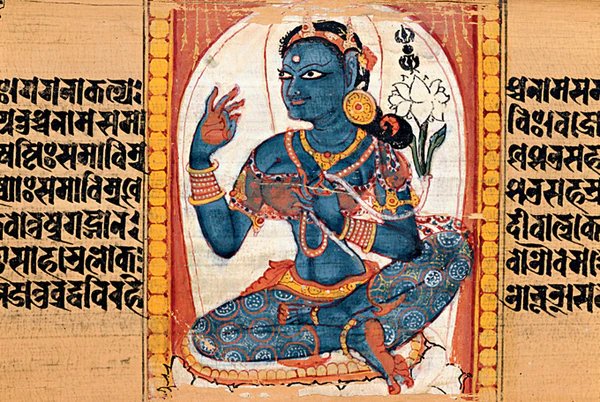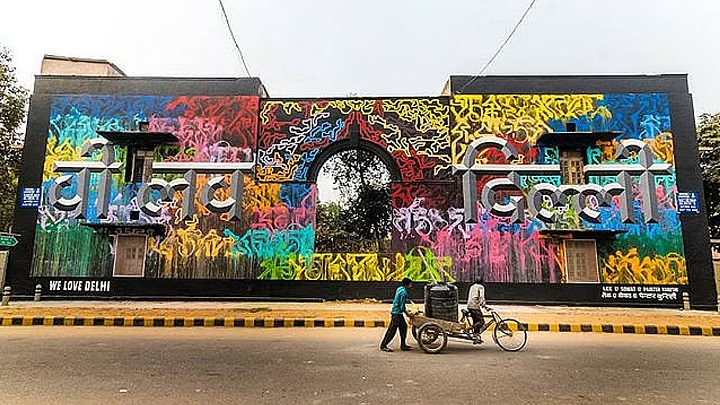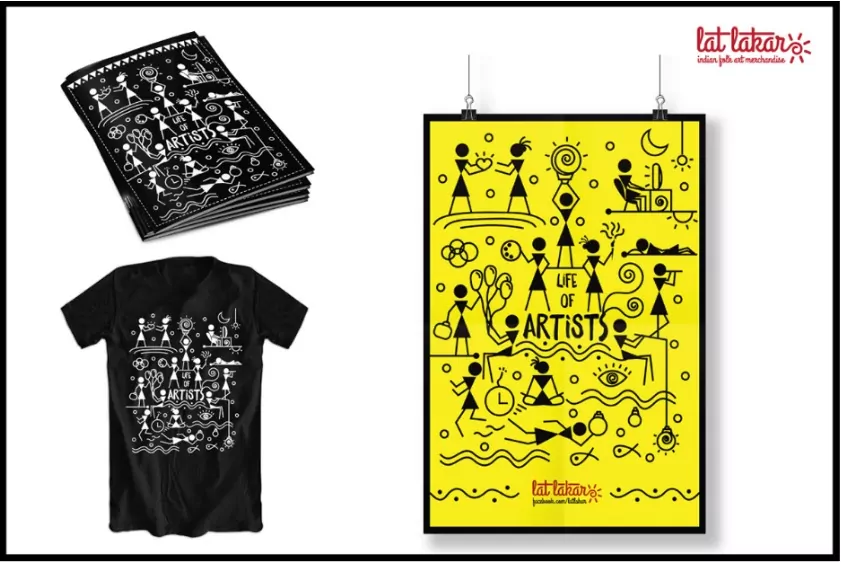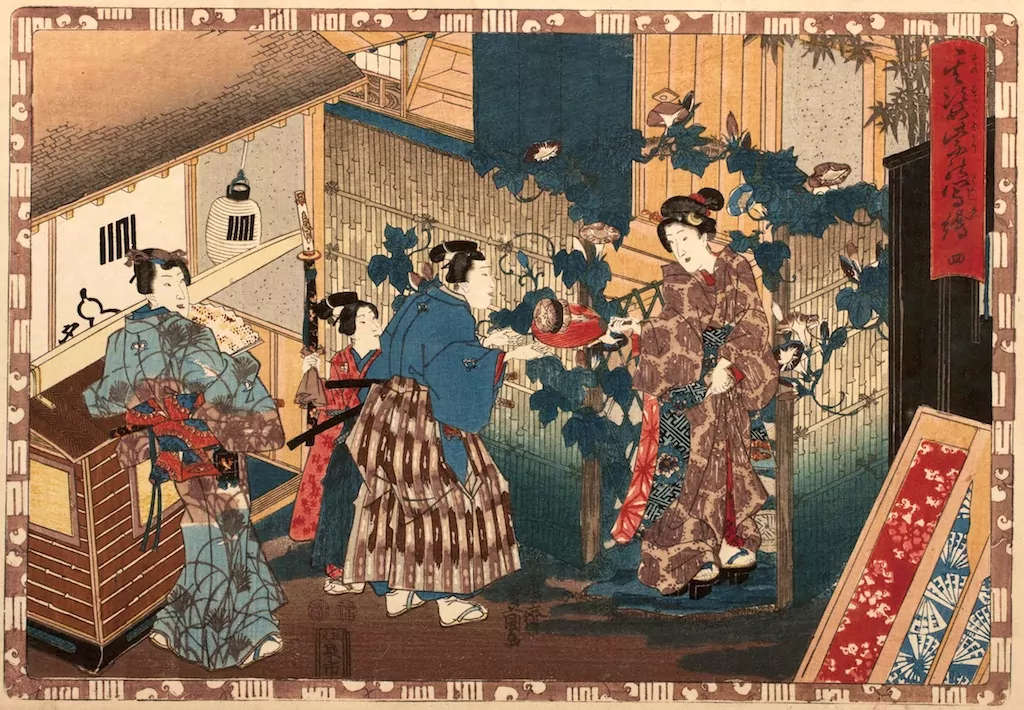Despite being popularised by the Mughal Empire, Miniature paintings have existed in India as far back as the 7th century AD, flourishing under the patronage of the Palas of Bengal. Buddhist scriptures and texts were illustrated on 3-inch wide palm-leaf manuscripts, with depictions of Buddhist deities. The colours used in Pala art were subdued, with curvy lines, reminiscent of the murals in Ajanta.
Influence of Jainism in Miniature paintings
While Miniature paintings were influenced by Buddhism in the East, western India’s miniature artistic movement was inspired by Jainism. The regions where this form of miniature paintings prevailed were Rajasthan, Gujarat and Malwa, from the 12th to 16th century AD. Unlike the East, these Miniature paintings comprised bold colours, vigorous lines and exaggerated physical traits.
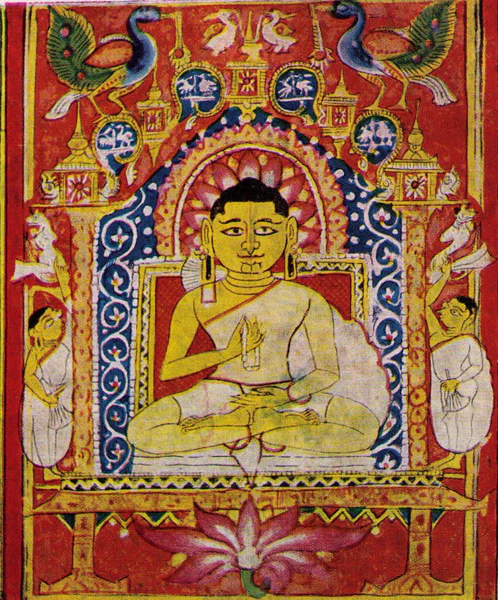
A fusion of Persian style with traditional Miniature paintings
By the 15th century, the Persian influence resulted in a transition of Miniature paintings with paper replacing palm leaves, hunting scenes and a variety of facial types began appearing in the artworks along with colours such as gold and aquamarine blue. By the 16th to 18th century AD, Miniature art in India truly thrived under the Mughals who used subjects like religion, culture and tradition with Persian style fusing with local Indian art to create a highly detailed and rich art form.
Rajasthani Miniature art and Pahari art
Unlike the Mughal Miniature paintings, which largely depicted royal life, Rajasthani miniatures were focused on the love stories of Lord Krishna as well as the mythological literature of the Ramayana and Mahabharata. Eventually, it led to the many distinct schools of Rajasthani miniature art such as Malwa, Mewar, Marwar, Bundi-Kota, Kishangarh and Amber.
Another miniature style that evolved under the Rajputs was the Pahari style in the mountain regions between Jammu and Himachal Pradesh. The Pahari school of miniature painting was a fusion between Mughal miniature art and Vaishnavite stories. Pahari art comprises various schools under it such as the bold Basohli art which uses monochrome colours and multi-floor structures while the Kangra style focuses on nature. Other styles include Guler and Kullu-Mandi.
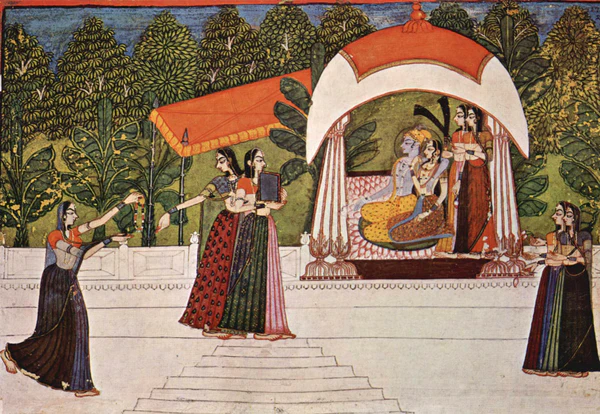
Deccani style Miniature paintings
The Deccani style miniature art was practised from the 16th – 19th century in Bijapur, Ahmednagar, Golkonda and Hyderabad. The style of artwork was a combination of European, Iranian and Turkish influences and paintings of this era revolved around the text illumination and decoration of the Holy Quran and the Surahs. The art form then evolved to become more indigenous, including romantic elements and a Mughal style.
While Miniature paintings in their different forms can be found in museums and old forts in Rajasthan, the art is only practised in a few regions of India. Moreover, the level of detail practised in Miniature paintings today simply cannot match the intricacy of its ancestors. Despite the lack of popularity of miniature art forms today, it remains a very important part of India’s history and a valuable source of inspiration and knowledge that was passed down through generations.
Download the Rooftop App from GooglePlay or AppStore and enroll in our maestro courses!
Discover us on Instagram @rooftop_app for all things on traditional Indian art.

